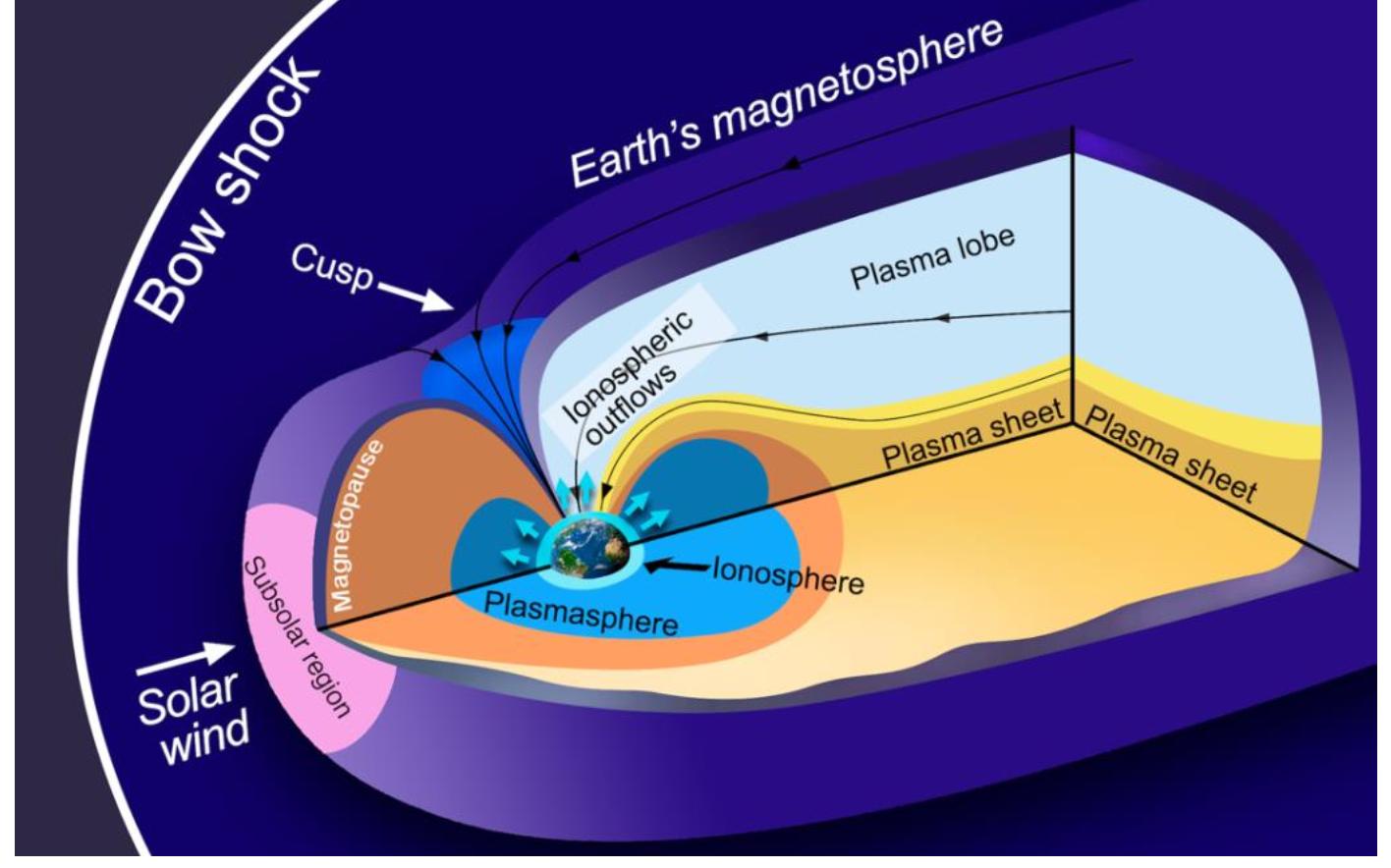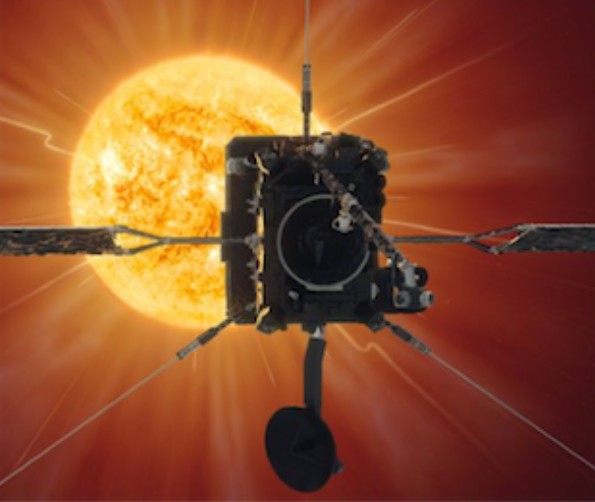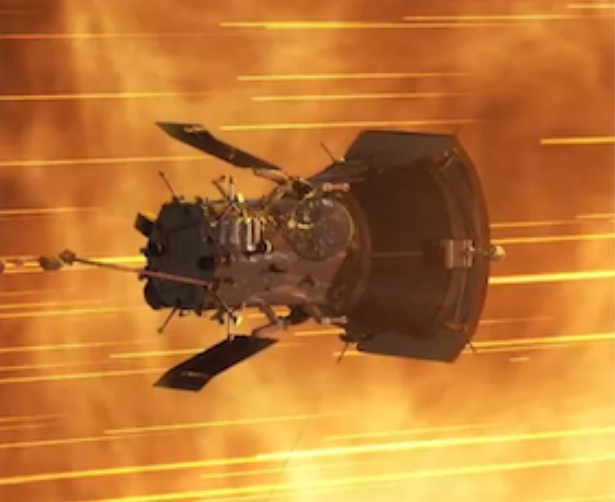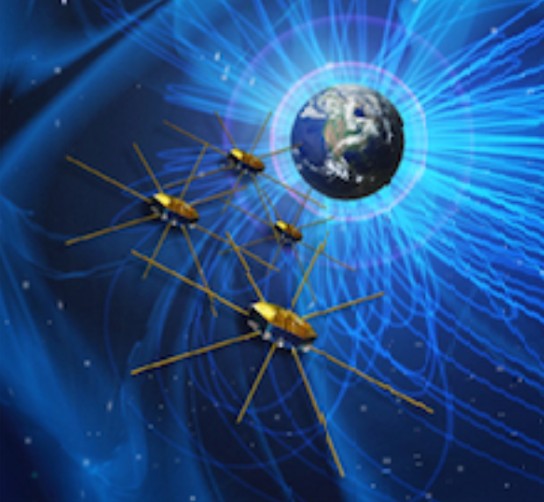Heliofísica

Who are we?
Heliosphere UM is the group of heliospheric and magnetospheric physics at the University of Murcia. Our research is focused on studying the properties of the Heliosphere, Earth's magnetosphere and the interaction between both of them. Both environments are composed of plasma, a gas made of charged particles that interact between themselves and with large scale magnetic fields, such as those of the Sun and the Earth.
Most of the visible matter in the universe is plasma. Thanks to the measurements made by space probes in our solar system, the Heliosphere and the planetary magnetospheres are ideal environments to study space plasma and the many physical phenomena that take place in them. We perform this tasks by means of numerical simulations as well as by treating the data collected from several space missions. Detailed explanations of our work can be found in the research section.
The results of our research serve to increase and improve our knowledge on the interplanetary medium. This contributes to refine the prediction models of space weather and, as a result, allows to prevent the damaging effects that extreme Heliospheric conditions can produce on Earth: from the lost of telecommunications satellites to the electric power grid of entire countries. Like for other natural disasters, prediction and prevention are keys to damp their effects.
On the other hand, the possibility Por otro lado, la posibilidad de realizar mediciones en los plasmas del interior de la heliosfera nos permite contrastar teorías sobre el funcionamiento de estos sistemas y extrapolar dichas teorías a plasmas astrofísicos, como los discos de acreción, el medio interestelar o vientos estelares. En dichos casos, sólo las simulaciones numéricas y las observaciones a distancia pueden aportarnos información sobre el estado y evolución del plasma. Así pues, la heliosfera puede considerarse como un laboratorio natural donde poner a prueba teorías y modelos sobre otros plasmas que no son accesibles mediante medidas directas.

Figure: Main regions of the Earth's magnetosphere. Credit: J.M. Domínguez, adapted from Pollock et al. (2003)
Cutting-edge space science
Our research group works with the data from the latest space missions conceived to study the properties of heliospheric plasmas: Parker Solar Probe (PSP), Solar Orbiter (SolO) and Magnetospheric Multiscale (MMS). These missions allow to obtain high resolution measurements and reach locations that have never been explored before. Thanks to the analysis of this data, the heliophysics community is making progress on answering some of the questions that have been a matter of debate for decades in the field and, at the same time, newer ones are being considered.
Parker Solar Probe mission was launched by NASA on August 2018 and is the first spacecraft to have approach the Sun's surface to such short distances, just ten solar radii at the closest points of its orbit. The measurements of the plasma around PSP is providing information about the generation of the solar wind, about phenomena that turn out to be more frequent than initially expected, such as magnetic field "switchbacks", or about the properties of the solar wind at such an initial state.
Solar Orbiter mission was launched by the European Space Agency (ESA) on February 2020 and, even though its orbit around the Sun only manage to approach the spacecraft to one third of the Earth-Sun distance (slightly closer to the Sun than Mercury's orbit), the mission has two strong advantages over PSP. On the one hand, SolO is equipped with cameras that grant the possibility to capture images of the Sun at distances and resolutions never achieved before. On the other hand, PSP remains approximately in the plane of Earth's orbit, while SolO's orbit will increase its solar latitude up to 30 degrees, enough to observe the solar poles, which are still largely unknown.
Finally, the Magnetospheric Multiscale mission is the one among these missions that have been active for more time, since NASA launched it on March 2015. It consists of four spacecrafts that orbit the Earth with different flight formations during the mission. MMS is able to gather high resolution data in the near-Earth environment, from the solar wind to the magnetosphere, and allows to make some measurements that are impossible to obtain with single-spacecraft missions like PSP or SolO. MMS is key to understand the dynamics of the plasma populations surrounding Earth, and is specially important to comprehend the mechanisms that affect them, such as magnetic reconnection or turbulence.



Figure: From left to right, artist rendition of Parker Solar Probe, Solar Orbiter and Magnetospheric Multiscale missions. Sources: NASA, ESA and NASA, respectively






